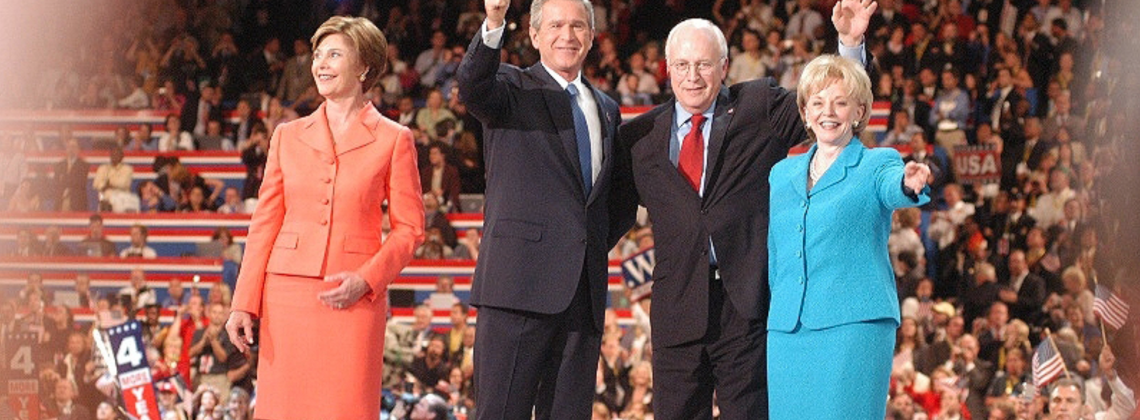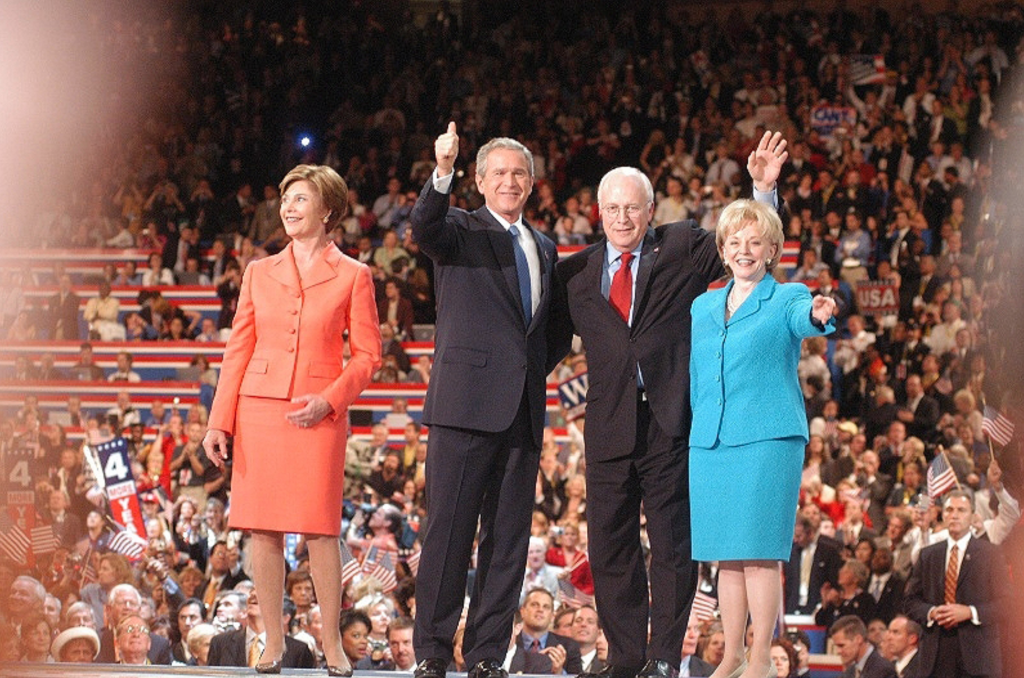

The second of a two-part series on how the Christian Right fell in love with and then started to sour on George W. Bush
In late June of 2004, the Republican National Committee announced its lineup of prime-time speakers for its upcoming New York City convention. The list included former New York City mayor Rudolph Giuliani, Arizona senator John McCain, California governor Arnold Schwarzenegger, and New York governor George Pataki. All of these Republicans had serious political differences with the president on social issues, and nearly all of them opposed a Federal Marriage Amendment that would define marriage as the union of one man and one woman. McCain, for example, said that such an Amendment was “antithetical in every way to the core philosophy of Republicans” because “it usurps from the states a fundamental authority they have always possessed and imposes a federal remedy for a problem that most states do not believe confronts them.”
As expected, conservatives in the party, especially those on the Christian Right, were not happy with the speakers. Tony Perkins of the Family Research Council complained that Republicans with strong “pro-family” credentials, such as Senator Sam Brownback of Kansas and Senator Rick Santorum of Pennsylvania, were not given slots. These politicians, Perkins said, represented the constituency “that makes up the heart and soul of the Republican Party . . . by keeping them on the sidelines [the GOP national committee members] have missed the chance [to draw] a sharp contrast between the Republican Party and the Democratic Party.” He told The New York Times that “the Republicans have got some explaining to do.”
Robert Knight of Concerned Women for America said that the Bush administration’s choice of convention speakers was a “gamble”—”a dangerous and wrong calculation” designed to pick up more votes from moderates. Knight connected the choice of speakers to his perception of the way Bush led (or failed to lead) the fight for the Federal Marriage Amendment. According to Knight, the president failed to bring a “sense of urgency and outrage” to his support of the amendment. And now he and his administration were choosing to highlight those in the party who opposed it. Paul Weyrich of the Free Congress Research and Education Foundation wondered “if the president is embarrassed to be seen with conservatives at the convention.” If this was the case, Weyrich announced, “maybe conservatives will be embarrassed to be seen with the president on Election Day.” Meanwhile, Mike Pence got 127 Republican House members to sign a letter to Bush asking him to give Henry Hyde, a longtime abortion opponent, a prime time speaking spot at the convention. The letter said that Hyde would excite the GOP faithful in New York like “Elvis at Memphis.”
It was clear to most political observers that the Bush administration did not want the public to perceive the convention as a celebration of the Christian Right. Many prominent leaders of the movement were not invited to New York. Less than three weeks before convention the GOP had yet to invite Franklin Graham, who had delivered the invocation at Bush’s inauguration. Some speculated that Bush was upset with Graham’s negative remarks about Islam in the wake of the 9-11, calling it a “very wicked and evil religion” at precisely the time the president was trying to calm fears and the millions of responsible Muslim citizens in the country. Jerry Falwell, the architect of the Moral Majority in the 1980s, would not have a role in the convention. He told reporters that he would attend the convention but would go “quietly in and quietly out” of the event. Pat Robertson, a 1988 GOP presidential candidate and founder of the Christian Coalition, said—with a clear reference to Schwarzenegger and Giuliani—that “apparently political stars get rewarded with a prime-time convention spot if they disagree with President Bush’s position on a constitutional ban on gay marriage . . . and the right to life.”
Bush and his staff may have learned a lesson here from George H.W. Bush’s 1992 GOP convention in Houston. The Bush Sr. campaign gave an opening night prime-time slot to Pat Buchanan, who had challenged the president in several Republican primaries. The conservative political pundit delivered his now famous (or perhaps infamous) “culture war” speech, describing, in no uncertain terms and with little nuance, a “religious war going on in our country for the soul of America.” (Journalist Molly Ivins said Buchanan’s strident Christian nationalist address “probably sounded better in the original German.”) The speech divided the GOP and most likely had something to do with Bush losing the election to Bill Clinton, as many moderate and liberal Republicans turned to third-party candidate Ross Perot in the general election.
And if all of the controversy over the conference speakers was not enough, Vice President Dick Cheney dropped a bomb on the Christian Right less than a week before the convention got underway. At a campaign stop in Iowa on August 24, Cheney said that he preferred the issue of same-sex marriage to be handled by the states and not the federal government. The statement put him at odds with Bush on the issue and made the vice-president appear to supporters of the Federal Marriage Amendment as yet another liberal Republican. This was not the first time Cheney had expressed his views on gay marriage. He had taken the same position during the 2000 election—but that was before the heated debate over the Federal Marriage Amendment and his boss’s support of it. Cheney’s views on the matter were shaped by the fact that his daughter, Mary, was in a lesbian relationship.
Perkins was furious. He said Cheney was “shooting from the hip and hitting the administration in the foot.” While Perkins and his team were working hard to influence the Republican Party platform’s positions on marriage, abortion, and stem-cell research, Cheney was making their job more difficult by sending “mixed messages.” “We support President Bush’s commitment to a constitutional amendment on marriage,” Perkins said, “but we are left to wonder why the vice president is allowed to depart from this position when the top of the ticket is unified on all other issues. . . . We urge Vice President Cheney to support President Bush and a constitutional amendment on marriage.”
In the end, the Bush campaign managed to quell these Christian Right concerns, at least for the moment. It held private events and rallies to show their support for this wing of the party and seasoned the schedule with the likes of evangelical pastors Max Lucado and Greg Laurie, Senators Santorum and Brownback, and music from Christian artists Third Day, Jaci Velasquez, and Michael W. Smith. The Christian Right left New York relatively happy. Now was not the time for criticism. Now was the time to unite around George W. Bush, the man who many ordinary evangelicals still believed was God’s anointed man for the job.
But in the bigger picture, the 2004 GOP Convention was an important turning point in the Christian Right’s relationship with Bush. While they backed him in large numbers in November, they also wondered if he was really willing to fight for their agenda with a sense of “urgency and outrage.” If he would not engage in such a battle, was there someone else out there who would?
John Fea is Executive Editor of Current